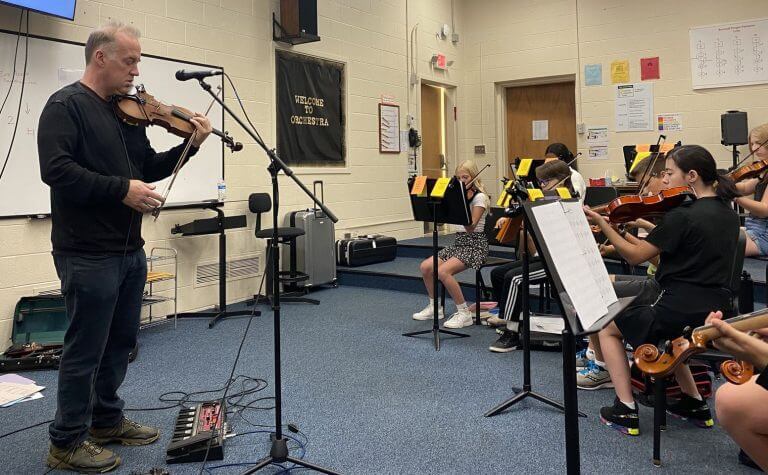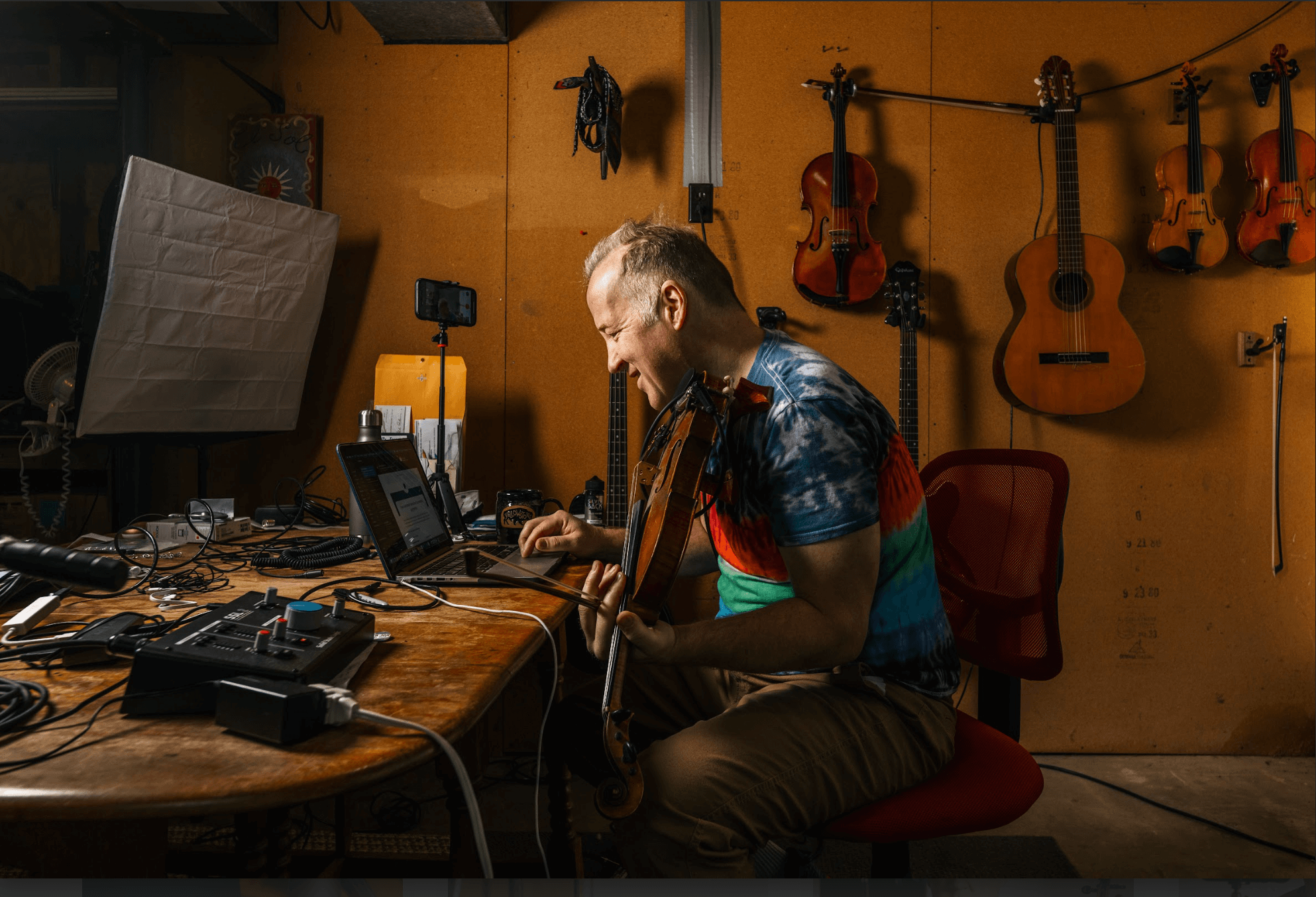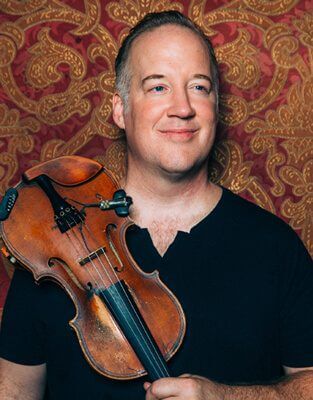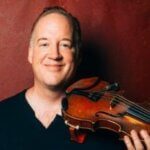I discovered a new trick with my loop pedal. It may be obvious to you but it was a revelation to me.
The problem: Setting up the song accompaniment with a looper is boring to listen to.
The trick: On the last measure I switched to the bass line (instead of waiting for bar 1). This shortens the setup.
It will make more sense if you watch this video:
Table of Contents
The false problem and how to arrange
Most people think loop pedals are about fancy tech. In reality, you can learn the tech in 30 seconds in a group class.
The real skill needed to use a loop pedal well is arranging.
Arranging
Think about an arrangement in three parts:
- bass line
- inner voices (aka the “middle stuff” between melody and bass)
- melody (You can add percussion as a fourth part, but it’s not necessary).
There are two components to inner voices and bass lines:
- harmonic– this stays the same across different grooves and styles
- rhythmic- this changes depending on the groove or style
You probably know how to play melodies, and have a blind spot when it comes to making bass lines and inner voices.
To become confident with arranging get this course, or join me in class.
which part of the arrangement goes into the first loop?
In the example in video above, I record the inner voices first because they have more subdivisions than the bass line. Sometimes a bass line has enough subdivisions that you can record it first. It depends on the overall arc of your set. If you’re performing multiple tunes, you may want to mix it up.
why use a loop pedal besides as a gimmick?
The performance above was for 4th graders as part of an all-day visit to a k-12 school district. I gave them a concert and Q&A to get them excited about joining the orchestra next year. Using the loops is more interesting for 4th graders than an entire solo violin concert, and it’s more affordable than hiring a band.
For grades 5-12, I use the loop pedal as a teaching tool in the classroom:
- to get them playing the entire class.
- to help them stay together,
- to adjust tempo, key, or types of groove for different levels of students.
I also use it:
- to run guided practice sessions for adults on Zoom,
- in making hundreds of free play-along videos to help you practice.
- in the practice room.
opportunities for teachers

Want to give your students a creative, fun experience?
Consider bringing me to your school, bearing the following in mind:
- I’ve worked with thousands of students in grades k-12 & college, + teacher training.
- Students play 95% of the time in every class, and they have fun
- We cover groove, ear training, improvisation, applied theory, arranging/comp in eclectic styles, et al
- Teachers tell me my teaching is well-paced and packed with useful lessons.
This wasn’t always true in the past.
20 years ago I’d ask teachers “what can I improve”? and they gave me feedback about my pacing and clarity.
I listened. Because even if most teachers don’t understand the skills I teach yet, they understand teaching.
It took a long time and a lot of growing up for me to develop teaching skills and a “teacher’s heart”.
Nowadays, when I ask “what can be improved”, teachers answer immediately, “nothing. It’s great. We want to bring you back”.
That’s why I’m confident recommending my in-person or Zoom clinics, especially if you want to:
- augment your skills,
- give your students something different, and/or
- meet more of the recommended music teaching standards.
To explore the opportunity, schedule a call.






